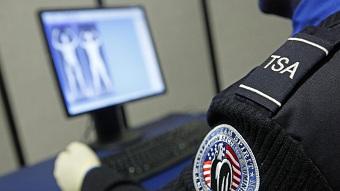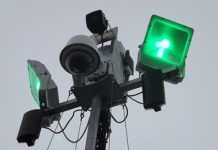A new system being tested to screen passengers at US airports appears to be exposing more than it should. Officials at the Transportation Security Administration (TSA), the Department of Homeland Security division that keeps the nation’s airports safe, have discovered that the technology the equipment uses to render images poses “privacy risks,” according to a recent federal contracting document reviewed by Quartz. Its manufacturer is now working on “enhanced privacy software” to fix the issue, according to the document, though it doesn’t provide further details.
The screening system is part of TSA’s “Future Lane Experience,” or “FLEx,” an initiative designed to speed up screening at airports. The name of the equipment vendor is redacted in the document, but is identified in a separate government database as ThruVision Inc. of Ashburn, Virginia. The system the TSA purchased, called “TAC,” is described by ThruVision as a “people-screening camera that sees any type of item—including metal, plastic, ceramic, gel, liquid, powder and paper—hidden in peoples’ clothing at distances of 3 to 10m,” or about 10 to 32 feet.
TSA spokesperson Jenny Burke told Quartz that the agency asked the vendor to make additions to the system’s privacy filters to ensure it would comply with federal law on body scanners. Kevin Gramer, a ThruVision vice president, said the company’s products offer “tremendous” privacy and are used internationally, but a “piece of narrowly-drawn legislation from several years ago created a requirement that all people screening technologies used at US airport checkpoints have this type of filter regardless of the image displayed.”








